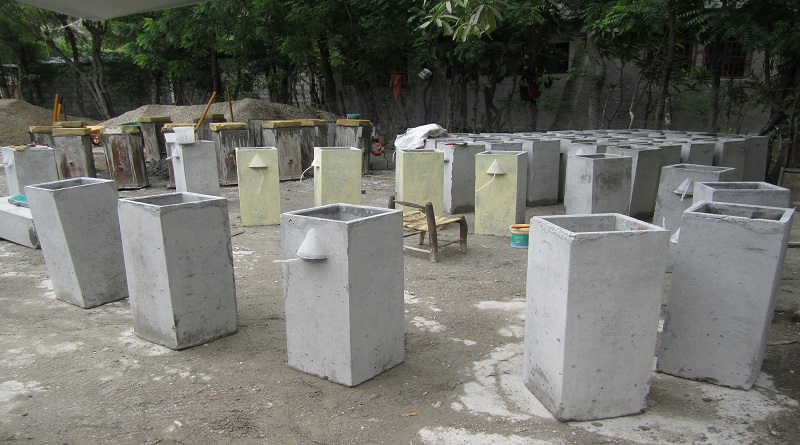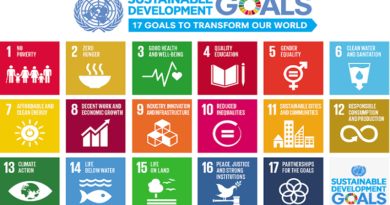Low-Tech Design Can Fuel the Sustainable Development Goals
By Dylan Lunney
Low-tech, scalable, local solutions present an exciting opportunity to address the poverty-ending objectives within the United Nations’ Sustainable Development Goals for 2030. In order for development projects to be successful and sustainable, communities should not be bystanders in projects that are designed to help them. Solutions addressing the challenges of people living in poverty should be designed by carefully examining and accounting for the needs, practices, and available resources of the end-user.
This seems like a basic, self-evident concept, but the history of development projects demonstrates otherwise.
Take, for instance, that the cumulative cost of failed water systems in sub-Saharan Africa alone is estimated to be $1.2 billion to $1.5 billion from 1987-2007. The posterchild of this development design failure is the PlayPump, a once highly-touted safe drinking water ‘solution’ that quickly failed when it turned out that kids would have to ‘play’ for 27 hours a day to filter the intended amount of water.
Development projects that fail to incorporate the needs, skills, habits and resources of the end-user don’t produce their intended result, in this instance providing safe drinking water. And they are an enormous waste of money, time and resources. Instead, beneficiaries should be involved in identifying the technology and approach that will benefit them most, and the community should be directly involved in the building and maintaining of their local infrastructure.
Low-tech, high-thinking
OHorizons, where I work, is part of this appropriate design movement in global development. We call our design process “low-tech, high-thinking.â€
A lot of attention is given to the newest app or high-tech gadget. You’ve probably heard of Bill Gates’ highly-celebrated machine that turns human waste into water. It’s impressive. It’s also impractical for most poor, rural communities, where the water and sanitation crisis is particularly dire. Residents in such communities likely don’t have the infrastructure or funds to build or maintain this $1.5 million facility that is roughly the size of two school buses.
The core belief behind the low-tech, high-thinking movement is that it takes just as much creativity and ingenuity to create affordable, simple solutions that can have a meaningful impact on a global scale. Understanding the systemic underlying causes along with listening to and learning from the end-user, is a vital part of this design process. Adhering to the following principles can also help guide this process and ensure a solution is truly centered around the beneficiary and the environment in which they live.
Low-tech principles
Simple: Anyone, regardless of education level or expertise, should be able to develop and implement a solution with minimal instruction.
Low-cost: The solution should be affordable to the end-user.
Locally-sourced: 100 percent of the materials, tools and labour should be available locally.
Flexible: Every community is different and has different resources available to them; solutions should be flexible enough to adapt to varying local conditions.
Open-source: Solutions should be freely available to anyone who would like to utilize them.
In-the-field examples
OHorizons has used this approach to engineer a Wood Mold for the production of concrete BioSand Filters (BSFs). We made our step-by-step construction manual open-source so that local organizations can manufacture BSFs for a fraction of the upfront costs of traditional methods. This innovation means more people can get safe drinking water access at an exponentially faster rate.
BioSand Filters (BSFs) are a fascinating low-tech, household appliance that use sand, gravel and natural biological processes to filter pathogens out of water, making it safe for drinking. Click here to learn more and to check out our free construction manual.
Many other fantastic household-level solutions follow similar design parameters. Two of my favorites are the Tippy Tap for hand-washing and the Liter of Light for indoor lighting without electricity. These solutions are open-source so anyone, anywhere can build them and improve their community.
The Tippy Tap is a hands-free way to wash your hands and is especially appropriate for rural areas where there is no running water. It is operated by a foot lever and thus reduces the chance for bacteria transmission as the user touches only the soap. They’re also very easy to build and can be made with basic, low-cost materials.
Liter of Light has a 17-minute video on its website that walks you through how to build your own eco-friendly bottle light. These light bulbs, which are made from an old plastic bottle filled with water and chlorine, are illuminating homes in communities living without electricity. They’re inexpensive, easy to make, and powerful enough to light up a windowless room.
Conclusion
As the world continues to focus on ways to effectively eliminate global poverty and the framework that sustains it, one area to think seriously about investing in is low-tech, human-centered design projects that transform beneficiaries into local change makers.
Harnessing the power of people through low-tech, high-thinking design has amazing potential to help the world realize the Sustainable Development Goals.
Dylan Lunney is the Director of Communications for the nonprofit OHorizons. Dylan holds a B.A. in Political Science from the University of Wisconsin-Madison. He is a life learner and dedicated to using his time and skills to promote and improve social justice, democracy, and social innovation.
Â
Â
Â




